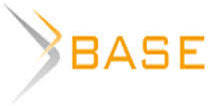METHODOLOGICAL ASPECTS OF BANKING RISK MANAGEMENT
Today, banking is one of the areas in which the use of digital technology is implemented most effectively. The article highlights the substantive and essential advantages of digitalization of services for commercial banks and their clients.
At the same time, it should be noted that the digitalization of services has contributed to the formation of a significant number of risks of various natures for all economic entities, including banking institutions and their clients. The article provides a list of possible potential threats to banks and their clients in the process of providing financial services using digital technology and digital channels of access to financial resources. The author classifies the entire set of such risks into two groups, which are client risks and banking risks, and provides a detailed assessment of each of the risk groups.
The destructive consequences of the use of digital technology by banks and their clients in the process of using financial services are examined in detail, in particular, incidents of gaining unauthorized access to clients’ personal data are examined, namely, the general dynamics of operations without customer consent, the dynamics of incidents in the context of types and vectors of attacks are analyzed (phishing, social engineering, malware), as well as the dynamics of telephone fraud in the banking environment.
Some measures to counter unauthorized access to customer data were identified, and general trends in the transformation of the banking sector in the context of digitalization of services were highlighted.

















While nobody left any comments to this publication.
You can be first.
Р. 1884-1888.
15. Tan J. The Importance of Cybersecurity in the Era of Digital Banking, Medium (2023), available at: https://medium.com/@iam.jeksen/the-importance-of-cybersecurity-in-the-era-of-digital-banking-9c79637cd2fa (Accessed 22 Aaugust 2023).